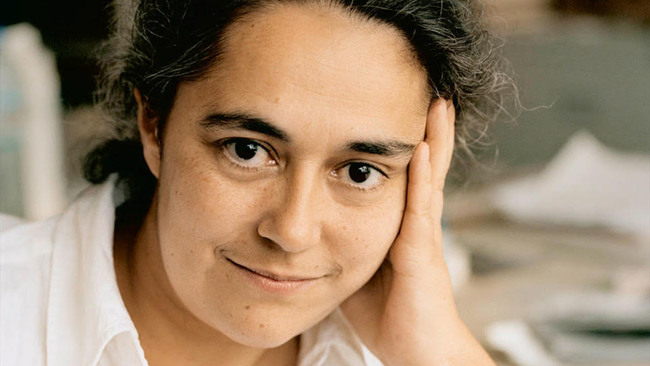Tacita Dean in London and Paris

In what Tim Adams, profiling Tacita Dean for the Guardian, calls “an unprecedented collaboration” between “three of the nation’s most prestigious institutions,” two exhibitions are opening in London today—Portrait at the National Portrait Gallery and Still Life at the National Gallery, both on view through May 28—followed by Landscape, opening at the Royal Academy of Arts on May 19 and up through August 12.
Adams: “Her very earliest work was chalk on blackboard, haunted seascapes and ghost ships, which remains a signature of all her shows. After that it was 16 mm and 35 mm film, itself now a mostly lost art form. When the last film-processing studio closed in London she launched a one-woman campaign in the Guardian to try to save it. She felt bereft, like a painter suddenly denied oils. She made a haunting valedictory film, Kodak, about the final knockings of the company’s factory in Chalon-sur-Saône, in France. ‘Any artist who works in paint or chalk or film or whatever knows that sometimes the medium itself will give you something entirely unexpected, and something far better than what you intended,’ she says now. ‘And at that point you follow the medium.’”
The NPG notes that Portrait “is the first exhibition in the Gallery’s history to be devoted to the medium of film.” Subjects here include Merce Cunningham, Claes Oldenburg, Julie Mehretu, Cy Twombly, and David Hockney. “Dean has also made two new film works for the exhibition, Providence (2017), a portrait of David Warner with hummingbirds, and His Picture in Little (2017), a film in miniature also featuring Stephen Dillane and Ben Whishaw, made specifically for presentation within the Gallery’s permanent Collection.”
“Film after film,” writes the Guardian’s Adrian Searle, “Dean approaches her subjects with a cool eye and a calculated distance. Yet what we get is proximity, a sense of the impending, the tension between the watcher and the watched. And which is which? Scale matters here, grain and light, sound and silence. . . . In her two rooms at the National Gallery, I began to see the procession of paintings, photographs and films as the frames of a single film, each image flowing into the next around the walls, as if there were some story there.”
For Artforum,Erika Balsom previews the third show: “Dean’s landscapes span disparate materials—chalk drawings, films, gouache on found postcards—but a beguiling interest in the contingent and the ephemeral is found throughout the artist’s extensive engagement with the genre. At the Royal Academy, a survey of this work will be accompanied by the premiere of a 35-mm film made using the same aperture-masking technique the artist developed for FILM, 2011, her monumental commission for Tate Modern’s Turbine Hall.”
In Paris, this year’s Cinéma du réel, running from March 23 through April 1, will present a selection of Dean’s films on 16 mm and 35 mm. Dean will attend the festival on March 23, 24, and 25, taking part in a public talk with historian and critic Patricia Falguières on the 24th.
Updates, 3/18: “Dean deserves this unprecedented accolade,” writes Laura Cumming in the Observer. “At fifty-two, she is one of our most profound and original artists—pensive, elegiac, perpetually inventive and attracted to a world on the verge of disappearance. This might be the English coast, vanishing beneath high tides; or the fruit in a still life; or the old man pottering in his orchard among apples that may perhaps outlive him. Still life, landscape and portrait, the old genres of painting, are redefined in these marvelous film works.”
“One film, His Picture in Little, depicts three generations of Hamlet-playing actors—Stephen Dillane, David Warner and Ben Whishaw—in an impossible dialogue together,” writes Sophie Bew for AnOther. “The piece takes its name from a line in Shakespeare’s Hamlet, in which portraits including miniatures were a symbolic part. Dean created a stencil that, in covering the aperture, allowed the artist to capture all three actors in the same photochemical film frame without them ever meeting. Head and shoulder shots, as well as fully reclined poses, are intercut with whirling magnolia trees and quivering snowdrops. ‘So I filmed Steven on the left, rewound the film, Ben in the middle, rewound the film . . . then filmed David Warner on the right . . . at different times, in different countries. And then only at the very end does the film get processed and then I see what comes out. What happens is this magical moment which is all about the coincidence of gesture: Ben might turn left and Steven turn right—it’s all just unknowable.’”
For news and items of interest throughout the day, every day, follow @CriterionDaily.



